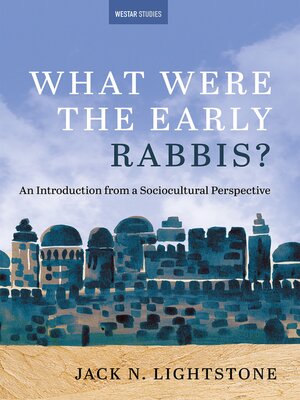What Were the Early Rabbis?
ebook ∣ An Introduction from a Sociocultural Perspective · Westar Studies
By Jack N. Lightstone

Sign up to save your library
With an OverDrive account, you can save your favorite libraries for at-a-glance information about availability. Find out more about OverDrive accounts.
Find this title in Libby, the library reading app by OverDrive.



Search for a digital library with this title
Title found at these libraries:
| Loading... |
Over the first eight centuries CE, the religious cultures of Middle Eastern, Mediterranean and many European lands transformed. Worship of "the gods" largely gave way to the worship of YHWH, the God of Israel, under Christianity and Islam, both developments of contemporary Judaism, after Rome destroyed Judaism's central shrine, the Jerusalem Temple, in 70 CE. But concomitant changes occurred within contemporary Judaism. The events of 70 wiped away well-established Judaic institutions in the Land of Israel, and over time the authority of a cadre of new "masters" of Judaic law, life, and practice, the "rabbis," took hold. What was the core, professional-like profile of members of this emerging cadre in the late second and early third centuries, when this group first attained a level of stable institutionalization (even if not yet well-established authority)? What views did they promote about the authoritative basis of their profile? What in their surrounding and antecedent sociocultural contexts lent prima facie legitimacy and currency to that profile? Geared to a nonspecialist readership, What Were the Early Rabbis? addresses these questions and consequently sheds light on eventual shifts in power that came to underpin Judaic communal life, while Christianity and Islam "Judaized" non-Jews under their expansive hegemonies.






